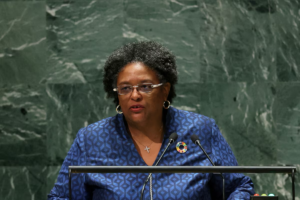The southern and western subpopulations are on track to disappear as sea ice becomes too thin amid rising global temperatures
Sarah KutaJune 17, 2024 4:13 p.m.
The polar bears living in Canada’s Hudson Bay will disappear within the next few decades unless humans halt global warming, according to new research.
If global temperatures increase between 1.6 to 2.1 degrees Celsius, the southern population of Hudson Bay bears will die off. If they rise between 2.2 and 2.6 degrees Celsius, the western population will also vanish.
Though Small and Slow, the Tuatara is the Top Predator in Its Ecosystem
Those are the findings of a new paper published last week in the journal Communications Earth & Environment. Researchers considered the newest climate models from the Intergovernmental Panel on Climate Change to predict when sea ice in Hudson Bay would be too thin for the bears to survive.
Every fall, a thick layer of sea ice forms atop the chilly waters of Hudson Bay, which helps polar bears hunt for seals, their main source of food.
Every spring, the ice melts and the large marine mammals retreat to land, where they rely on their fat stores (and, increasingly, human garbage) to keep them going until the ice can form again.
But as the world heats up, sea ice is forming later in the fall and melting earlier in the spring. Already, this means polar bears are fasting for longer periods of time than usual.
Researchers say this isn’t sustainable. If ice-free periods last too long, polar bears will stop reproducing and eventually starve to death. The southern population of Hudson Bay bears could disappear as early as the 2030s, according to the paper’s estimates.
And the mere presence of sea ice is not enough. Polar bears need ice that’s thick enough to support their weight, which can range from 330 to 1,300 pounds. They are strong swimmers, so crashing through the ice into the water below is not a problem. But when that happens, their chances of sneaking up on an unsuspecting seal are slim. They also need to be able to sprint across the ice to catch seals.
While other polar bear populations might be able to relocate to places with longer lasting, thick ice, the Hudson Bay bears don’t have that luxury.
“There’s really not any place for those bears to go, in part because [of] the way that the sea ice drifts with the winds,” says study co-author Julienne Stroeve, a climate scientist at the University of Manitoba, to CBC News’ Liny Lamberink.
Scientists don’t know exactly how thick sea ice needs to be to support polar bears. But the researchers used a conservative estimate of just under four inches, or about 10 centimeters, for the study.
Other researchers said the ice likely needs to be even thicker than that, meaning the study is probably underestimating the plight of the bears.
“I can’t land a helicopter on that ice,” says Andrew Derocher, professor of biological sciences at the University of Alberta who was not involved with the paper, to the New York Times’ Austyn Gaffney. “It needs to be about twice that thick for polar bears to be really using it.”
Under the Paris Agreement on climate change, countries agreed to try to limit global warming to 1.5 degrees Celsius above pre-industrial levels, with 2.0 degrees Celsius as the hard upper limit. But things are not looking good: The World Meteorological Organization says there’s a 47 percent chance global average temperatures between 2024 and 2028 will surpass 1.5 degrees. And, already, between May 2023 and May 2024, temperatures were 1.63 degreeswarmer than the pre-industrial era.
As the world’s southernmost polar bears, the two Hudson Bay groups are often considered indicators of how the 17 other polar bear subpopulations will fare in the future. Already, their numbers are falling: western Hudson Bay bears decreased by 27 percent between 2016 and 2021, according to one estimate.
“That decline is already kind of in progress, and if anything, I think now we’ll see it likely accelerating,” says study co-author Geoff York, senior director of research and policy at Polar Bears International, to ABC News’ Julia Jacobo.
Get the latest stories in your inbox every weekday.




